How to Delete Calendar Events on iPhone & Android?
Calendars and diaries were always a part of an organized lifestyle of a user but with the indulgence of modern gadgets in this niche, the importance of calendars has increased many folds. Not only can a user create an event for his calendar, but he can also invite or accept invitations from other users as well. Also, with the diversity in the modern platforms (like iOS, Android, Windows, Mac, etc.), there are many calendars applications as well as websites available to a user.
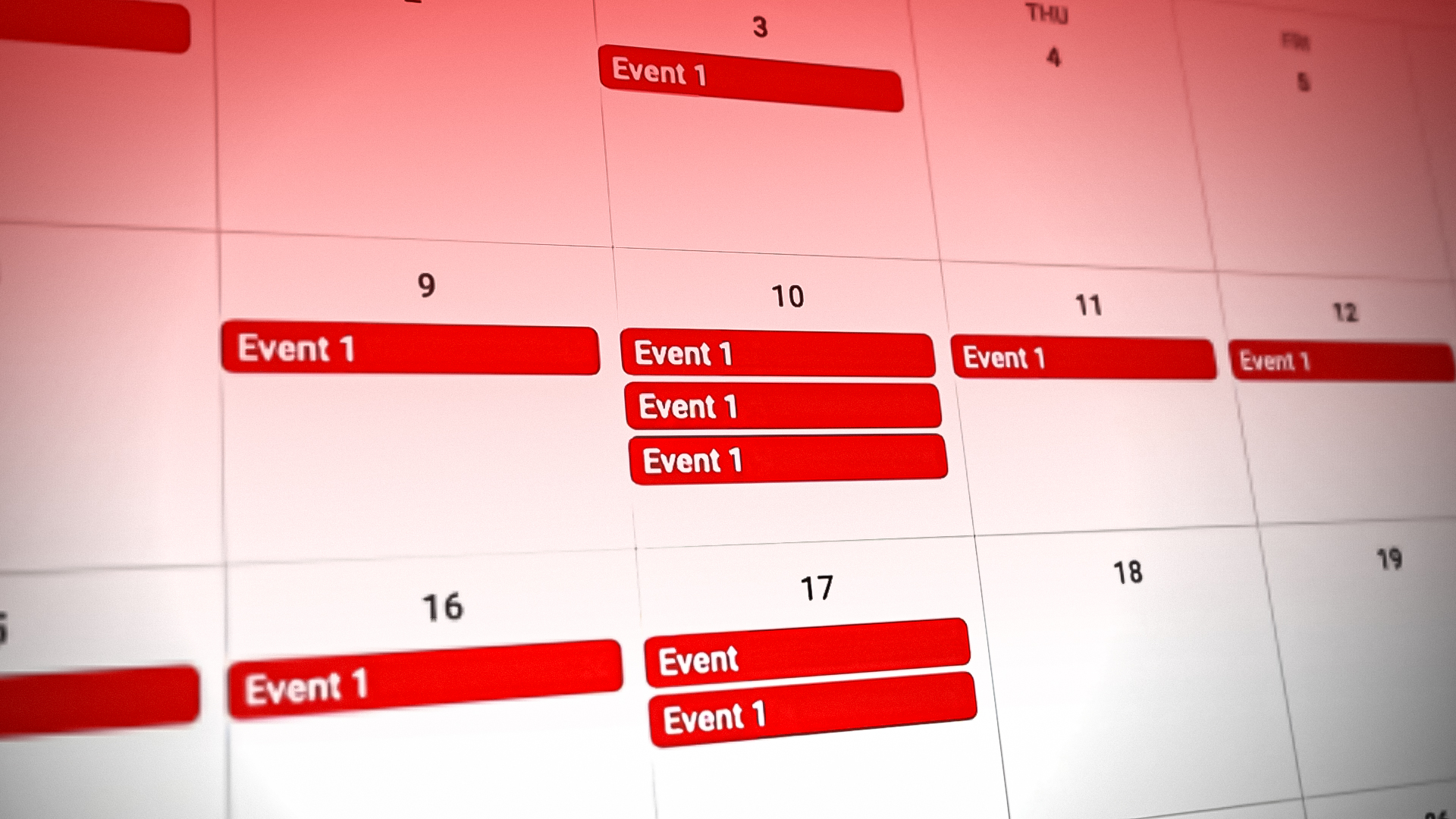
There may come a time when a user may want to delete calendar events. The process is different for different calendar types and we will try to cover some of the most used calendars.
Delete Calendar Events on an iPhone or iPod
There are many types of calendar events on the iPhone and the instructions slightly differ for each event type.
Delete a One Time Calendar Event
- Launch the Calendar app on the iPhone and find the event to be deleted. A user may use different views to find the problematic event.
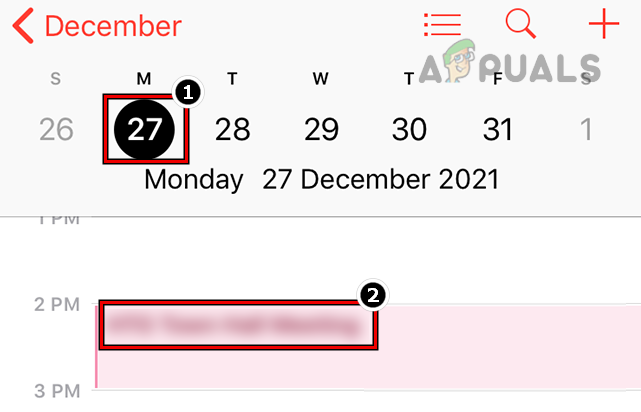
Select the Event in the iPhone Calendar - Once found, open the event and tap on the Delete Event button (near the bottom of the screen).
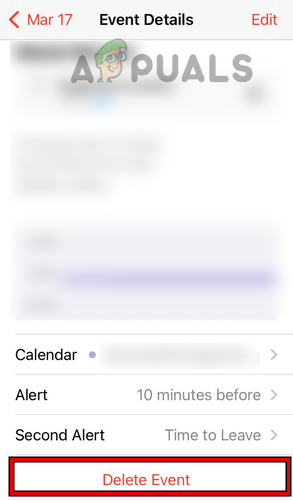
Delete Event in iPhone Calendar - Then confirm to delete the event and the event will be removed from the calendar.
Delete a Recurring Event
- Launch the Calendar app and open the event to be deleted.
- Now, near the bottom of the screen, tap on Delete Event.
- Then to delete the current event, tap on Delete This Event Only or to delete all the future events, tap on Delete All Future Events.
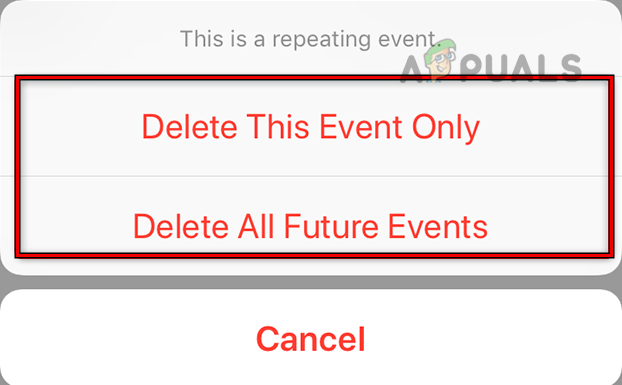
Delete a Repeating Event in the iPhone Calendar - Then confirm to delete the event and the recurring event will be removed from the calendar.
Delete a Shared Event
- Launch the Calendar app and open the shared event.
- Now, near the bottom of the screen, tap on Decline, and the shared event will be removed from the calendar. A user may access the declined event through his inbox (if he changes his mind in the future).
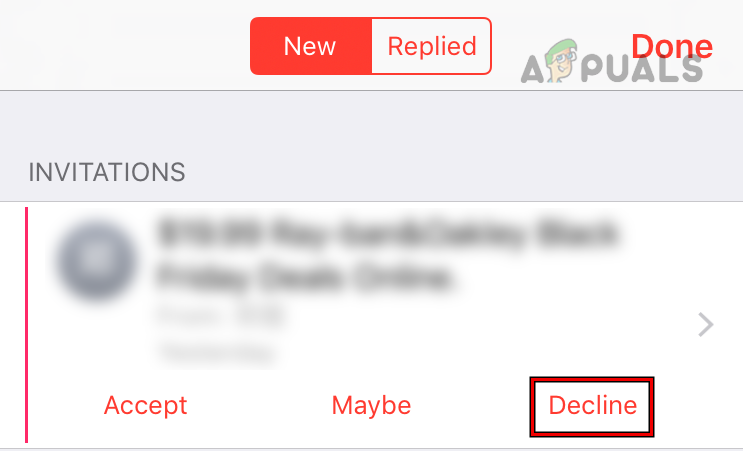
Decline a Shared Event in the iPhone Calendar
Unsubscribe to a Calendar Event
There may be some users who may be interested to unsubscribe a spam calendar event (as Delete Event will not be available).
- Launch the Calendar app and tap on the spam calendar event.
- Now tap on Unsubscribe and then confirm to unsubscribe the spam event.
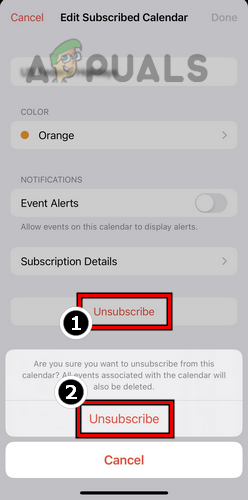
Unsubscribe a Calendar on iPhone
Delete an Entire Calendar
There can be users who may get subscribed to a spam calendar (e.g., by clicking a calendar on a suspicious website) and could not delete the calendar’s events from their calendar (in some cases, the Delete Event button may not be shown for the event in a spam calendar). These events can only be deleted after deleting the spam calendar from the user’s calendars.
- Launch the Calendar app and tap on Calendars (near the bottom of the screen).
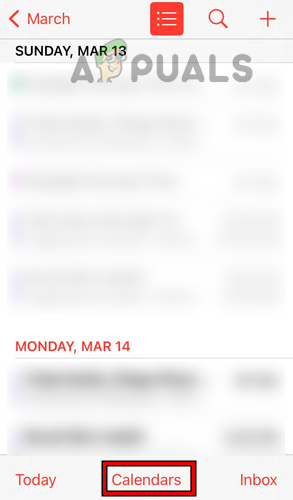
Open Calendars in the iPhone Calendar App - Now find out the problematic calendar (maybe the calendar that a user may not recognize) and tap on the Information icon (the i icon) of that calendar.
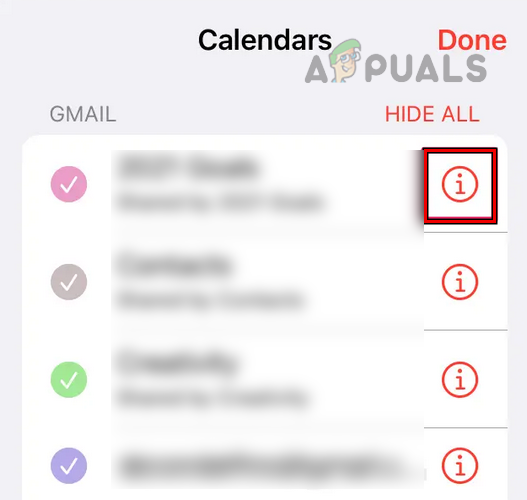
Tap on the Information Icon of the Problematic Calendar on the iPhone - Now scroll down and tap on Delete Calendar.
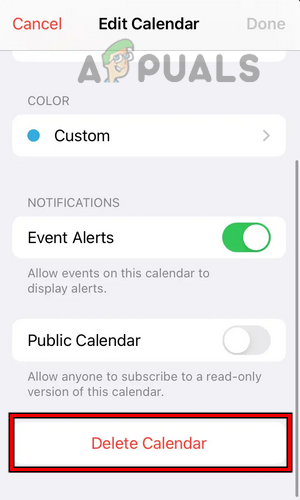
Delete a Calendar on the iPhone - Then confirm to delete the calendar and the calendar will be removed from the Calendar app.
- If that did not work, launch the iPhone or iPad Settings and open Calendar.
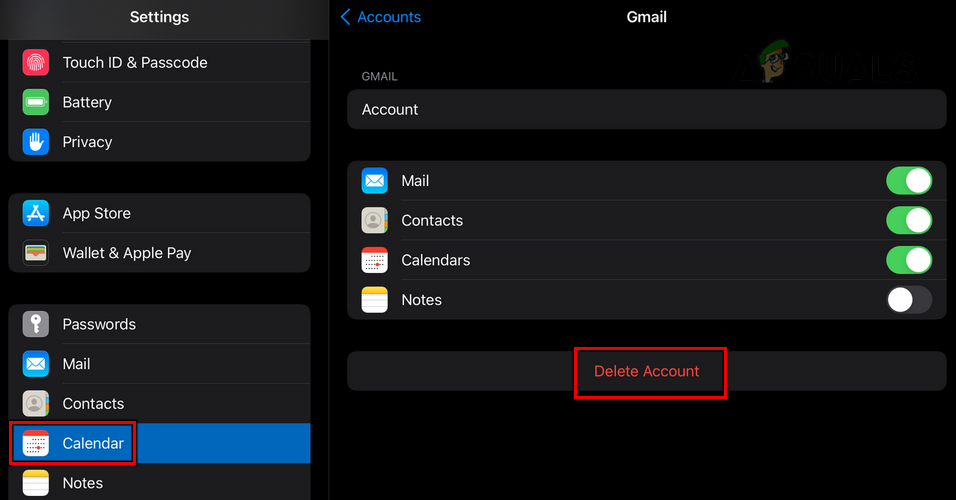
Delete the Problematic Calendar Account on the iPhone - Now select Accounts (or Passwords & Accounts, in case of iOS 13) and open Subscribed Calendars.
- Then find out the problematic calendar and open it.
- Now tap on Delete Account and then confirm to delete the account. This will remove the spam calendar from the iPhone’s Calendar app.
Recover Deleted Apple Calendar Events
- Launch a web browser and head to the iCloud website.
- Now login using the Apple credentials and head to the Account Settings.
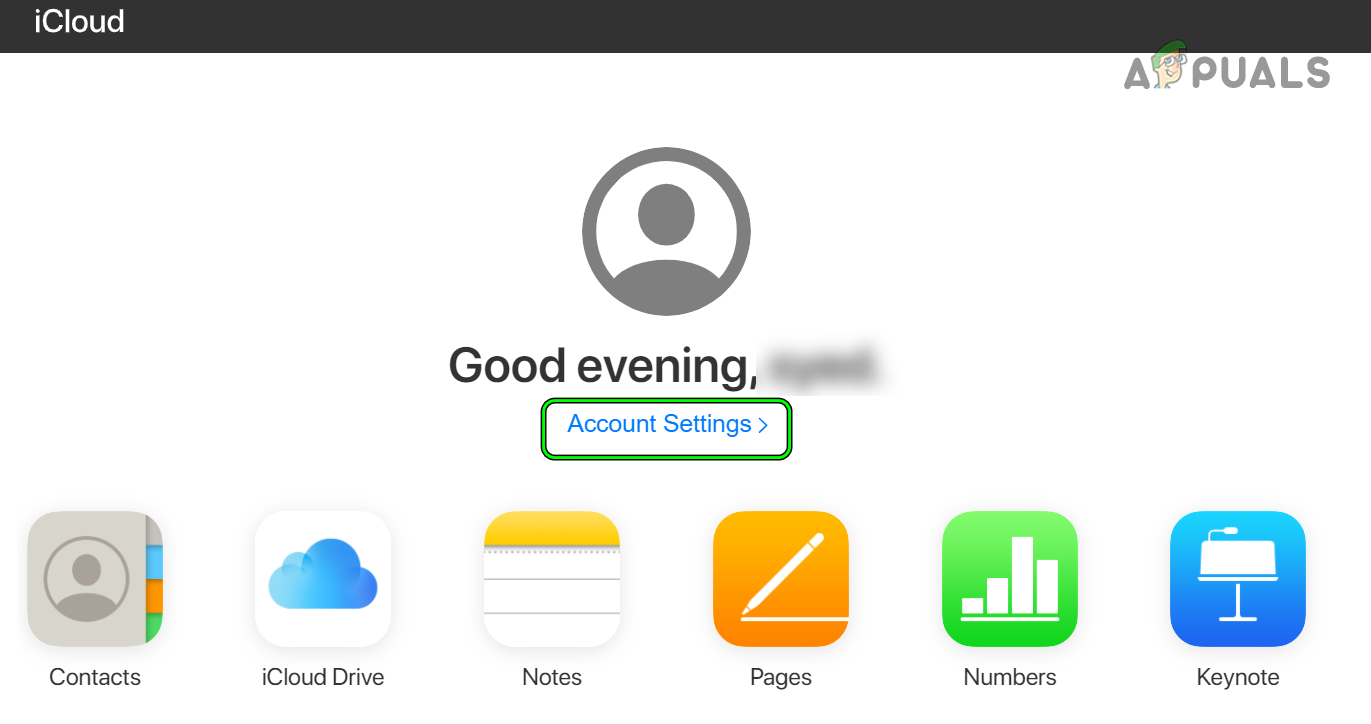
Open Account Settings of iCloud - Then, under Advanced, open Restore Calendar and Reminders.
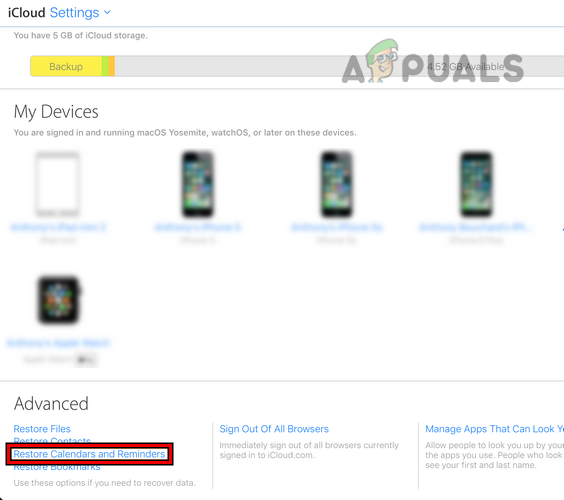
Open Restore Calendars and Reminders in the iCloud Settings - Now, select the date from where the Calendar is to be restored and click on Restore.
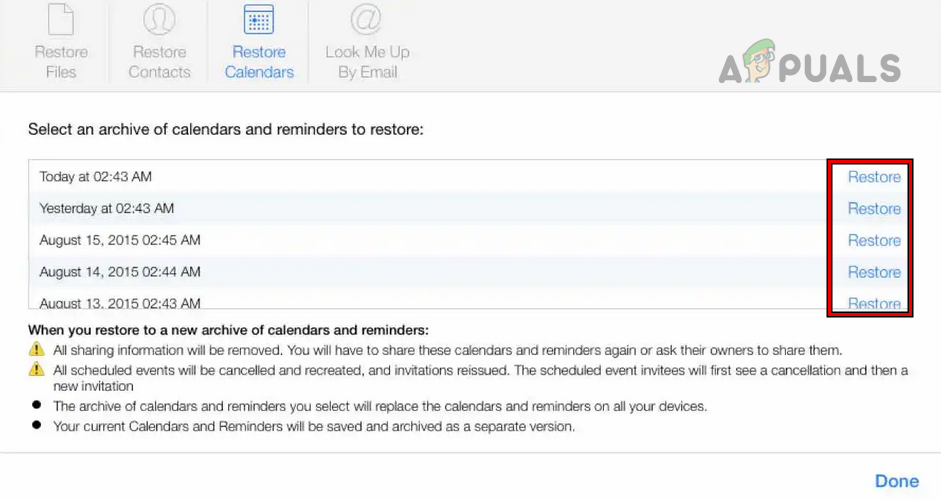
Restore the iPhone Calendars Through the iCloud - Then confirm to Restore the Apple Calendar events and the events will be restored.
The process on a Mac will also be identical to removing a calendar event as discussed above for iPad or iPhone.
Delete Calendar Events on an Android Phone or Tablet
Different calendar events on Android are deleted differently.
Delete a One Time Calendar Event
- Launch the Google Calendar app and select the event to be deleted.
- Now tap on the three vertical ellipses in the top right and select More.
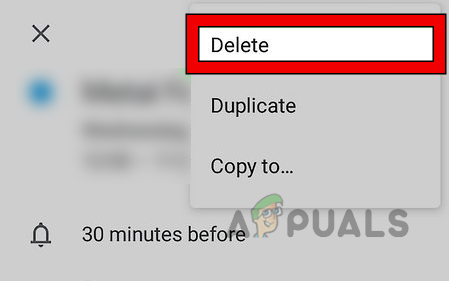
Delete a Calendar Event on the Android Phone - Now tap on Delete and then confirm to delete the calendar event.
Keep in mind, that the process is the same in the case of an invited event as well.
Delete a Recurring Calendar Event
- Launch the Google Calendar app and open the problematic event.
- Now, in the top right of the screen, tap on three vertical ellipses and select More.
- Now tap on Delete and if the user wants to delete the current occurrence, tap on Only This Event, otherwise delete all the recurring events by tapping All Events in Series.
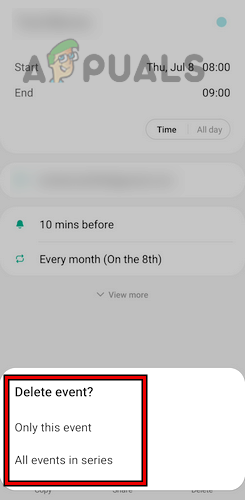
Delete a Recurring Event on the Android Phone - Then confirm to delete the recurring event and after that, the recurring event will be removed from a user’s calendar.
Delete Multiple Calendar Events
- Launch a web browser and steer to the Google Calendar website.
- Then click on Week (or any other view type) and in the dropdown, select Schedule.
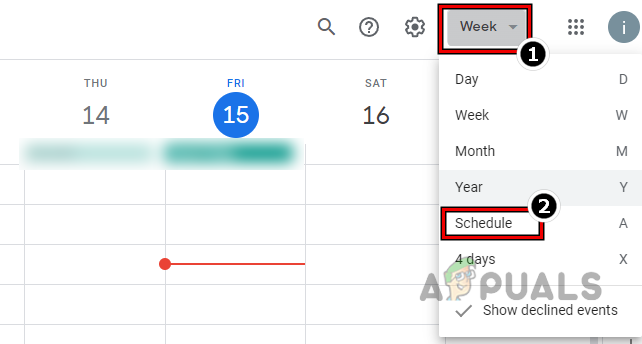
Open Schedule of the Google Calendar - Now select an event to be deleted and press Delete.
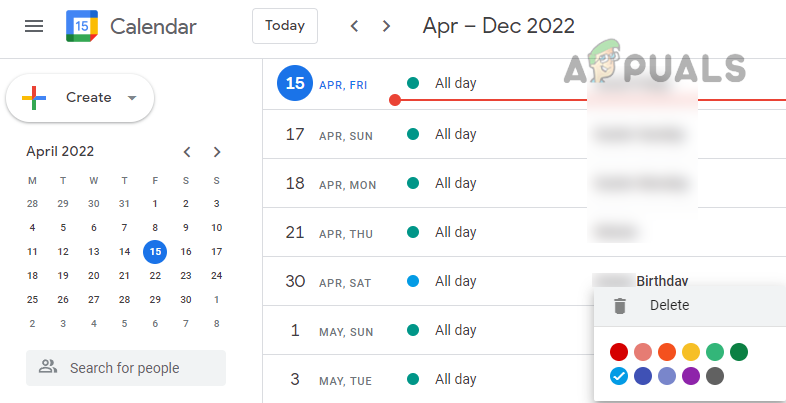
Delete an Event in the Schedule View of the Google Calendar - Then press the down arrow and once the desired event is selected, press Delete.
- Afterward, repeat the same to delete the problematic events from the Google Calendar.
Delete a Calendar from the Google Calendar
- Open the Google Calendar in a web browser and in the left pane of the calendar, hover over the problematic calendar.
- Now, click on the three vertical ellipses and open Settings and Sharing (or Settings).
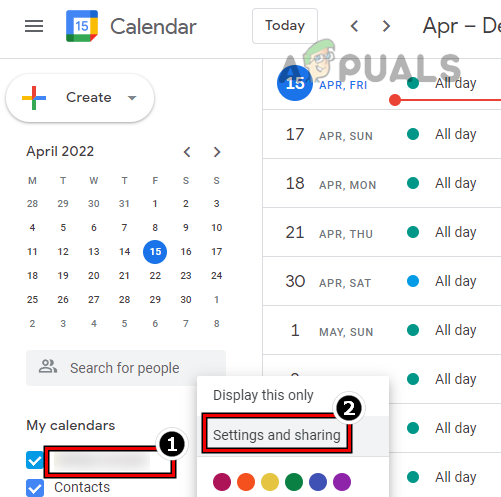
Open Settings and Sharing of a Calendar in the Google Calendar - Then scroll down and select Remove Calendar.
- Now, in the right pane, click on the Delete button (under Remove Calendar).
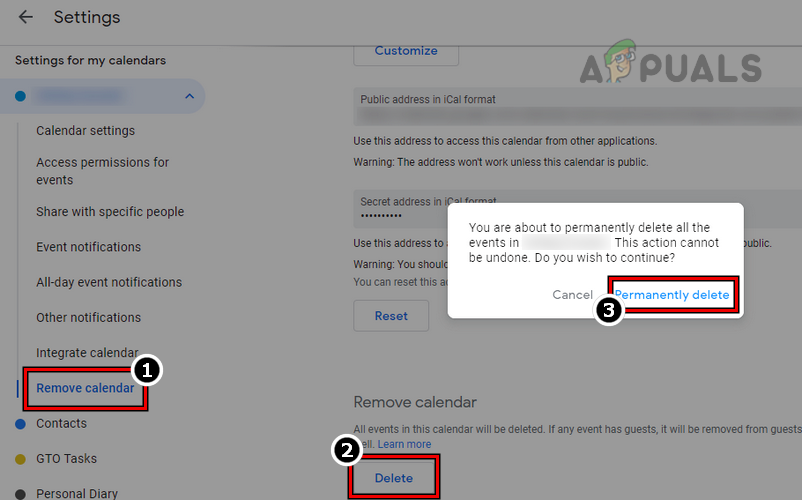
Permanently Delete a Calendar in the Google Calendar - Then, in the pop-up shown, click on Permanently Delete and the calendar will be removed from the user’s Google Calendar.
Restore a Deleted Event on an Android Phone
If a calendar event is accidentally deleted by a user, then the user may want to restore it. To do so:
- Launch a web browser and head to the Google Calendar website.
- Now, near the top right, tap on Settings and select Trash.
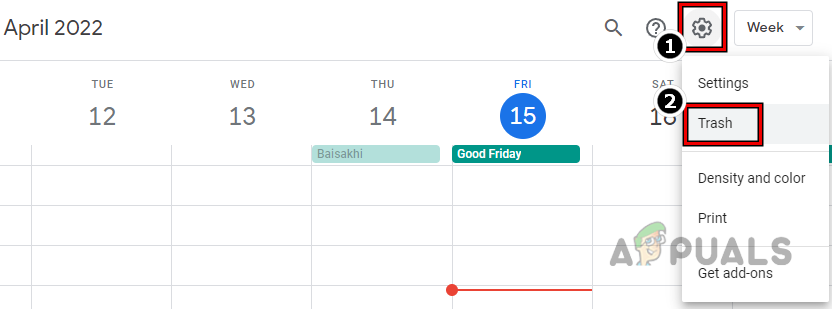
Open Trash of the Google Calendar - Then, in the left pane, select the required calendar and in the right pane, click on the Restore icon for the desired event.

Restore an Event in the Google Calendar
Delete a Calendar Event on Outlook
Outlook is available on many platforms but for illustration, we will discuss the process of deleting a calendar event for the PC version of Outlook.
Delete a One Time Calendar Event
- Launch Outlook and in the left pane, head to the Calendar tab.
- Now, in the right pane, right-click on the event and select Delete. This will delete the calendar event from Outlook.
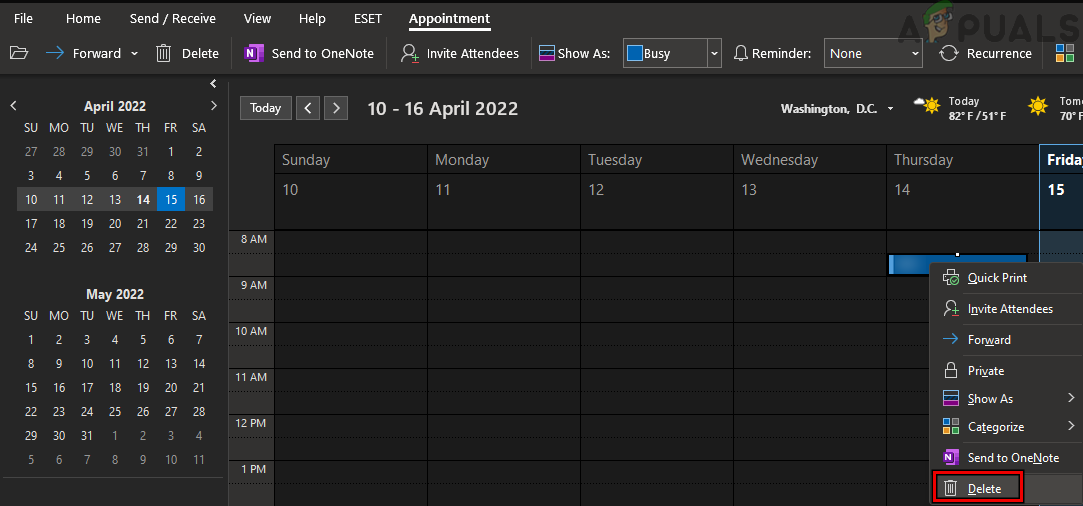
Delete an Event in the Outlook Calendar
Delete a Recurring Calendar Event
- Head to the Calendar tab in Outlook and then in the right pane, right-click on the recurring calendar event.
- Now hover over the Delete option and to delete the current occurrence, select Delete Occurrence, otherwise, to delete all the event occurrences, select Delete Series. This will delete a recurring event from Outlook.
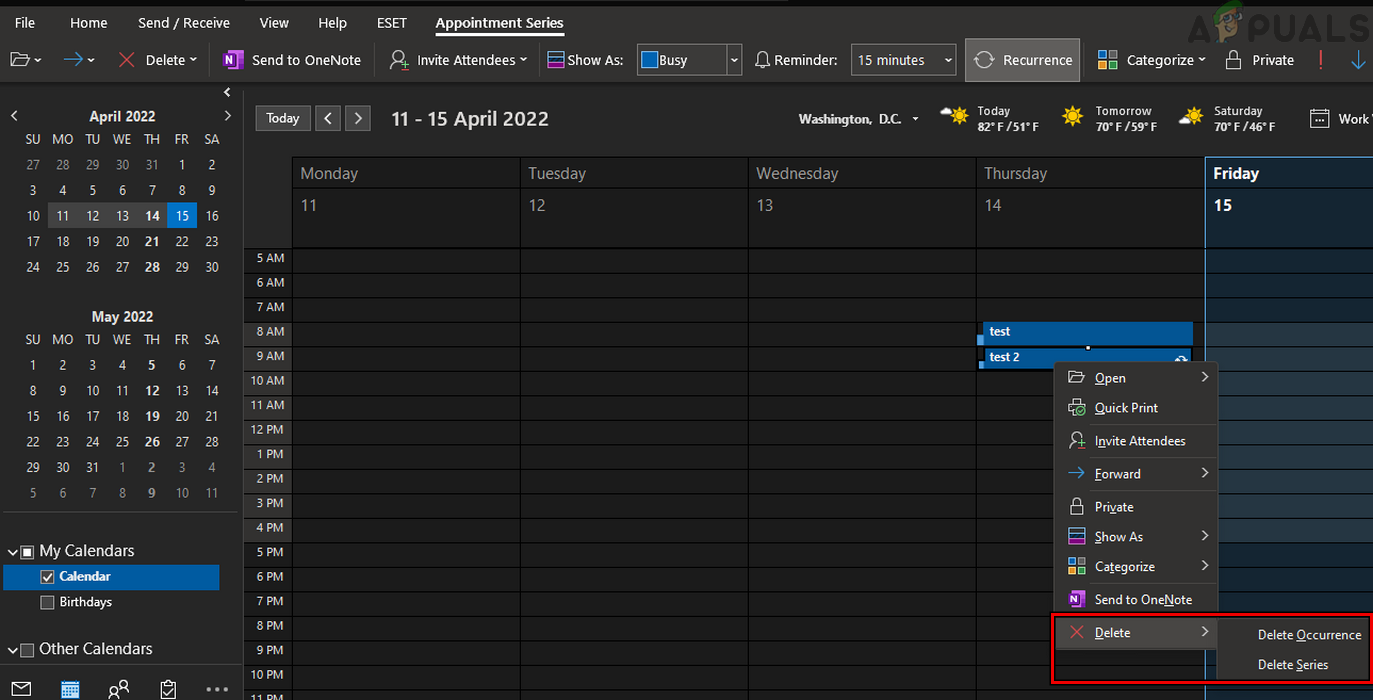
Delete a Recurring Event in the Outlook
Delete Multiple Calendar Events
- Open the Calendar tab in Outlook and the Ribbon, select View.
- Now click on Change View and select List.
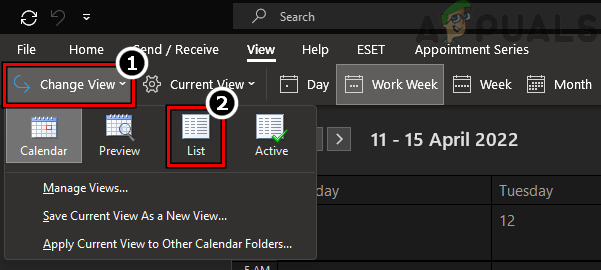
Change the Calendar View to List in Outlook - Then select the events to be deleted by holding the Ctrl key and left-clicking the required events.
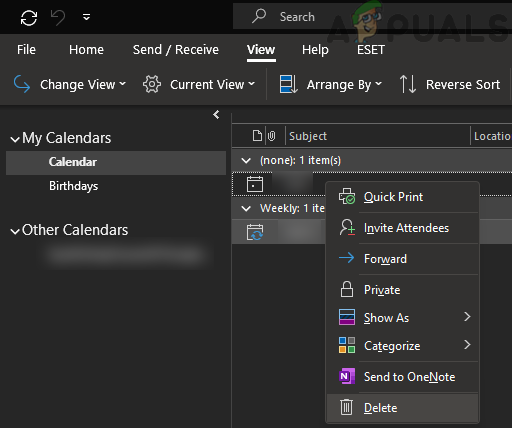
Delete Multiple Events in the List View of Outlook - Now press the Delete key and the events will be removed from the Outlook calendar.
Delete All Calendar Events
- Steer to the Calendar tab in Outlook and the Office Ribbon, and switch to the View tab.
- Now click on Change View and select List.
- Then, in the right pane, select all the events by pressing the Ctrl + A keys.

Delete All Events in the List View of the Outlook Calendar - Now hit the Delete key and all the events will be deleted from the Outlook Calendar.
Restore Deleted Events on Outlook
- Launch Outlook and in the email tab, expand the related Inbox.
- Now select the Delete Items folder and in the middle pane, click on Recover Items Recently Removed from This Folder.
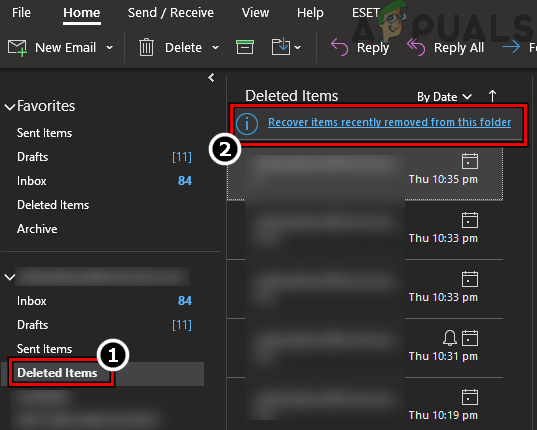
Open Recover Items Recently Removed from This Folder in Outlook - Now select the required events (or use the Select All button) and make sure the Restore Selected Items checkbox is checked.
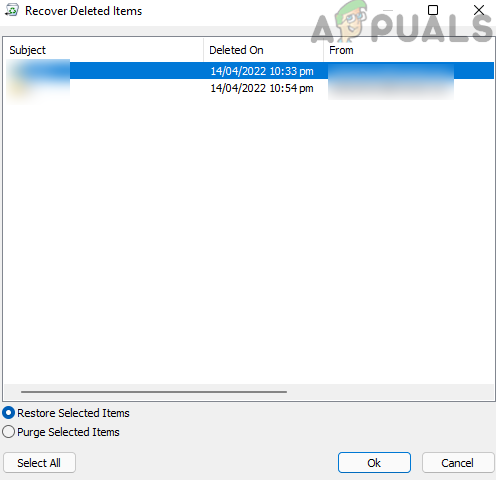
Recover Deleted Items in the Outlook Calendar - Then click on OK and the deleted items will be restored to their related folders.
Although we have tried to cover the most famous calendar types, there are practically too many apps/websites (like Yahoo, etc.) to cover but the basic steps will be nearly the same as discussed above. Moreover, some users may prefer an automated way to delete events from a calendar. For these, a 3rd party app like Toolbox Pro (a paid app) or Scriptable (free) may do the trick.





